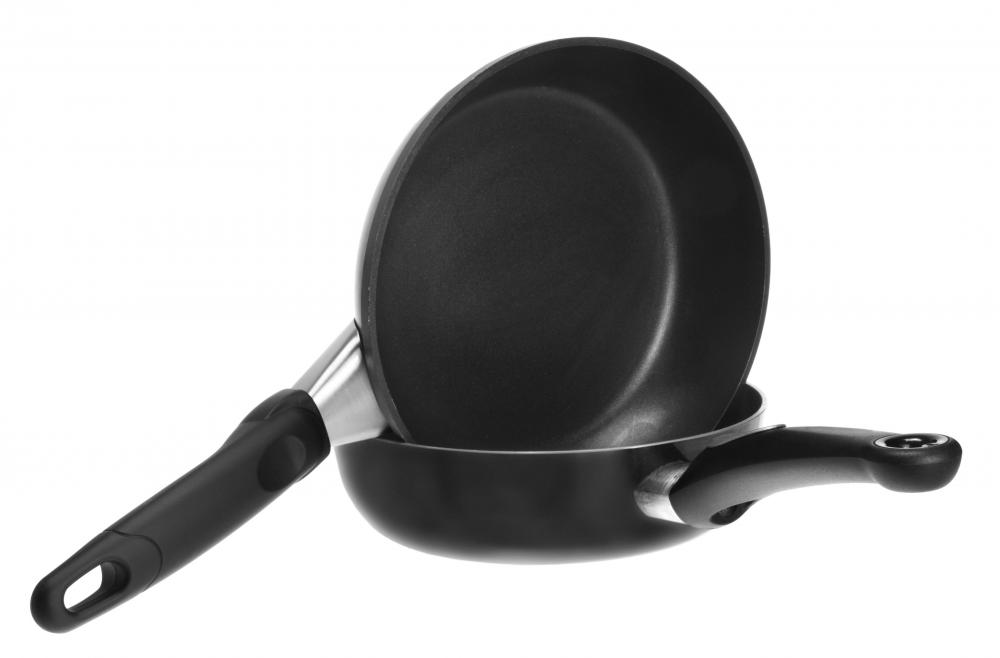At WiseGEEK, we're committed to delivering accurate, trustworthy information. Our expert-authored content is rigorously fact-checked and sourced from credible authorities. Discover how we uphold the highest standards in providing you with reliable knowledge.
What Is an Anodized Skillet?
An anodized skillet is made using a metal, usually aluminum, that has had the metal put through a controlled oxidization or anodization process. Chefs can use these skillets similar to any other skillet. The anodization process, however, hardens the outer layer of the skillet, giving it added durability and cooking benefits.
When manufacturers put a skillet through the anodization process, they immerse the metal in an acidic electrolyte bath. They then pass an electrical current through the bath solution. During this process, oxygen ions in the electrolyte bath combine with the surface of the aluminum, creating an oxide layer on the aluminum. This layer is porous, especially if the oxide layer is thick, so manufacturers usually coat the skillet with an additional sealant.

The main benefit of having an anodized skillet is that the oxide layer and sealant on the skillet provide a high degree of resistance to both corrosion and salts. In theory, this helps the skillet last longer than it otherwise would. The oxide film on an anodized skillet, however, tends to be brittle despite its excellent ability to adhere to the skillet. In practice, this means that the oxide film on the skillet is wear-resistant but does not handle heat especially well.

With a regular, non-anodized skillet, the aluminum might leach in very tiny amounts into the dish the chef prepares if the dish contains acidic ingredients such as tomato sauce or lemon juice. The oxide layer on an anodized skillet acts as a barrier between the aluminum and the food the chef cooks. Chefs thus can safely cook virtually any meal in an anodized skillet without the risk of metal contamination.
A chef might also desire an anodized skillet because the surface of the skillet is very smooth. Foods do not stick to it as easily as in they do in non-anodized cooking pots and pans. In fact, anodized skillets often are advertised with their non-stick quality as a selling point. Although this makes it a little more difficult to get a nice, seared appearance and flavor to certain foods, it translates to a very quick and easy cleanup, and the ability to shift food easily in the skillet while cooking.
The porous nature of the oxide layer created through the anodization process allows manufacturers to add colorings or dyes to the skillet if desired. This makes the skillet much more aesthetically pleasing. It also allows a chef to color-coordinate the skillet with the rest of the cookwear, appliances, or general hue of the kitchen in which he is working. This isn't a major issue for many cooks, but for individuals who display their cooking tools on open ceiling or wall hooks for easy access, or who use them publicly such as in a cooking show, the appearance of the skillet might be more of a concern.
AS FEATURED ON:
AS FEATURED ON:












Discuss this Article
Post your comments